Ed Kashi - legendary visual storyteller
For decades, legendary visual storyteller Ed Kashi has captured the experiences of the disenfranchised, voiceless and forgotten. Here, Armani Nimerawi reverses the spotlight to tell his tale.
Writers’ block
The world owes a great debt of gratitude to Ed Kashi’s poetry professor. If not for the erudite educator’s harsh criticisms, the young Kashi might have followed his childhood love of literature and storytelling into a life of pen and paper. As it was, however, Kashi’s freshman fantasies of a Nobel Prize for Literature were shattered, and the 17-year-old, adrift and in the grips of an early-onset existential crisis, was forced to search for another outlet for his innate need to narrate.
Fortunately for all, it was here that fate intervened, for, as well as curmudgeonly professors, New York’s Syracuse University is also home to the Newhouse School of Public Communications, boasting one of the most lauded photography and photojournalism faculties in the United States.
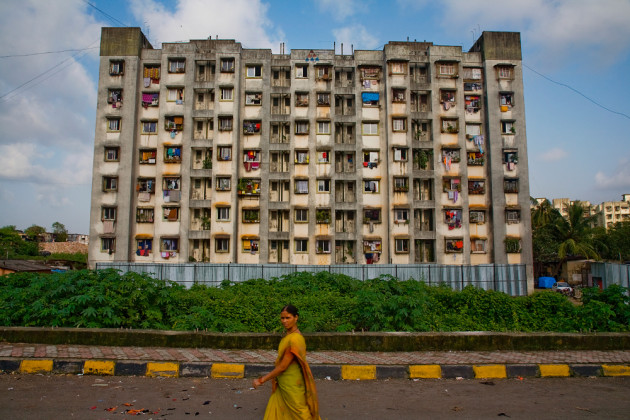
Armed with naught but a hastily completed black-and-white darkroom class and a rented camera, Kashi assembled his very first photographic portfolio. With the compensation of a good dose of natural talent, he was accepted into the highly competitive course. “Within a few months I fell in love,” he states simply.
Though the disparagement of Kashi’s poetic skills may have been the conscious catalyst for his change of heart, the photographic seeds had been deeply, unknowingly sown years before he ever held a camera. When they weren’t watching TV or going to the movies, Kashi and his friends were frequently found lurking in New York’s public libraries, where they would pour over old copies of LIFE magazine. “That was what informed me,” Kashi recalls fondly. “That was what made me feel alive and made me imagine about the world out there.”
Kashi had also been cultivated by the crucible of the 1960s and 1970s; a time when images had become the lingua franca that gave voice to the great political, social and cultural ferment that was taking place across the world. “There was the women’s rights movement, the civil rights movement, the environmental rights movement, the anti-Vietnam war movement,” Kashi explains. “All these things were part of the succour that I was breathing and drinking in my formative years, and it all came together very organically under the guise or banner of photojournalism.”
The raison d'être
Born, raised and educated in the great melting pot that is New York, Kashi’s life up until graduation could hardly be described as cloistered. Nonetheless, once his laurels were earned in 1979,
Kashi was ready to expand his horizons, and credits a most unconventional source for giving wing to his flight from the East Coast. “I attribute it to Woody Allen,” he laughs. “In the 1970s, after some of his movies, I thought, ‘I do not want to become Woody Allen!’, this myopic New Yorker who thinks that the world begins and ends on the Island of Manhattan.”
But where to relocate if you’re looking to avoid the regrettable slide into Allen’s quintessentially insular, not to mention hand-wringingly neurotic, New Yorker? California of course - its mellow optimism the very antithesis of The Empire City’s freneticism and clichéd cynicism. “It seemed like a mirage, like a dream,” Kashi reminisces. “For kids growing up in New York then, California couldn’t possibly be real.”
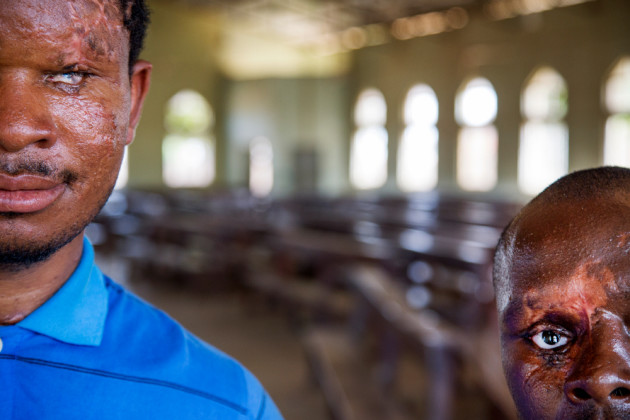
For Kashi, life in San Francisco would indeed be like a waking dream; the city by the bay would be the launching pad to an acclaimed career, and what began as an avoidance of cinema stereotypes would end as a 25-year sojourn.
Upon his arrival on the West Coast, Kashi set to work, taking on public relations commissions and shooting for free arts publications in the San Francisco Bay Area. “Basically anything that I could do that meant I’d be paid to photograph and also further my knowledge of the craft,” Kashi laughs. After a few years, he broke into stringing for the LA Times and a host of Californian magazines, and, in 1983, a mere four years after his graduation, Kashi was launched onto the national magazine market, working for some of the publishing leviathans of the age, including Time and Newsweek.
However, with each year of continued success came a mounting disillusionment with his work. “The reality of 90 per cent of magazine photography was doing colour portraits. After about five or six years of that, on some level, you could say I was a success - I was published all the time, I was making money, travelling - but I realised it wasn’t why I wanted to be a photographer,” says Kashi. “I wanted to be a photographer because I wanted to be a storyteller. My dream was to produce great photo essays like W. Eugene Smith or Henri Cartier-Bresson; the great photojournalists. I had to take it upon myself to develop my own personal project.”
In 1989, suffused with a newfound professional purpose, Kashi made what would be the first of many round trips to Northern Ireland to produce No Surrender: The Protestants; an unflinching look at the nation’s protestant communities and their attempts to rebuild their lives in the dawn of a fledgling ‘peace’ that was still haunted by the shadows of persevering prejudices. “It was the first time I started to make pictures I was proud of; that I started to make pictures in a reportage/documentary fashion,” says Kashi. “I was excited about what I was doing and, thankfully, other people were excited too.”
Three years in the making, No Surrender was a watershed in Kashi’s career. The project gained the attention of National Geographic magazine, and what Kashi terms “a higher class of publications”. It not only catapulted him onto the international stage, but would also set the scene for the work he’d do to this day: in-depth, long-form storytelling.
Making it personal
While Kashi started tackling big stories for National Geographic, he maintained a steadfast commitment to his own projects, travelling to produce smaller personal essays, such as City of the Dead, set in Cairo, or Jewish settlers, set in the West Bank. “There were so many different types of stories,” says Kashi, “whether it was going for three weeks, or working for three years on a project.”

In the mid-1990s, after almost a decade of intercontinental commuting, Kashi and his new wife, renowned writer and filmmaker Julie Winokur, turned their cameras on their own culture and focused on the issue of ageing in America. Originally intended as a one-off article for the New York Times, the project refused to die, and eight years later Kashi and Winokur were still documenting the vast and various experiences of America’s ageing population.
In 2003, Ageing in America: The Years Ahead was released as both a book and companion documentary. Both the original article for the New York Times and the final project enjoyed an explosion of international acclaim, winning over 20 prestigious international grants, awards and honours. Though completed over 10 years ago, the project’s legacy is still felt today, as it continues to challenge entrenched stigmas and preconceived notions about ageing in the US, a country that idolises and fetishises youth. “It began a magnum opus, and it fulfilled my dream: to create a body of work, an archive, on an issue, that would live on,” says Kashi. “It wouldn’t just be for magazines this month, or this year.”
New horizons
Ageing in America also had an enduring impact on Kashi’s modus operandi, as it was during the course of this project that both he and his wife metamorphosed from print-based journalists to multimedia storytellers.
Kashi and Winokur were early adopters of multimedia within the small world of photojournalism, utilising the creative elements offered by video as early as 2000. “It was early on that we saw the potential, both creatively, as well as storytellers, to start to use the voices of our subjects and motion,” recalls Kashi. By 2000, the couple had started Talking Eyes Media, a not-for-profit production company that seeks to kindle public debate and advocate positive change via what Kashi and Winokur call “multi-platform” storytelling, which seamlessly combines photography, text, audio and visuals.
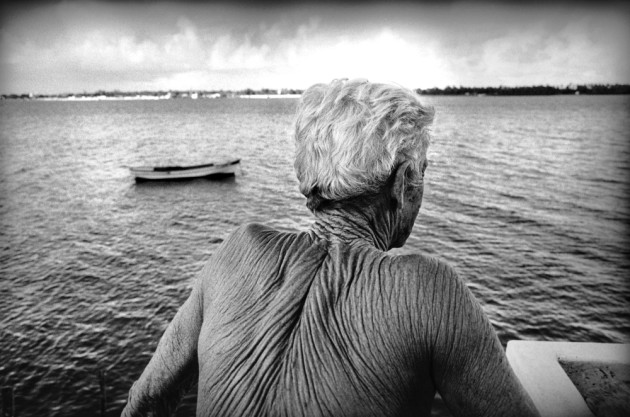
The couple’s foresightful embrace of multimedia has enabled them to tell more powerful stories that are capable of reaching, and touching, a wider audience. “Half of what I do now is video, and I would say 80 per cent of what I create goes directly to a screen, not to print. It’s profound; a huge change,” says Kashi. “Thirty-five years ago, when I began, I never would have imagined all the tools I have available now. The dream was to shoot Tri-X with a Leica,” he laughs. “Now, in most of my personal projects, I’m thinking short films and photo essay. In the past, it would have just been a photo essay. I can still do the traditional print or web-based series of still photos with text and captions, but now I can also create short films, and the material I have is so much richer.”
Till death do us part
The depth with which Kashi explores his projects requires an enormous commitment; a type of devotion that will, inevitably, demand sacrifice. Like all photographers, Kashi has had to learn how to counterbalance commercial interests with his personal passions. It was a lesson that he learned when No Surrender was still in its fledgling stages. “That was a time when I was getting 10 to 15 magazine assignments a week,” says Kashi, still seemingly incredulous. “I wouldn’t even want that now! But I was a kid and I thought it was great! Fortune magazine calls, Time calls, MacWorld calls, Stern calls, and I said, ‘Yes, yes, yes!’ When I made that commitment in 1988-1989 to begin working on the project in Northern Ireland, that was the first time I was able to say, ‘From July 5, I have my ticket booked to Belfast for two months. No assignment will stop me from doing that,’” he continues. “I missed a lot of work, but it was the key to developing myself as a storyteller.”
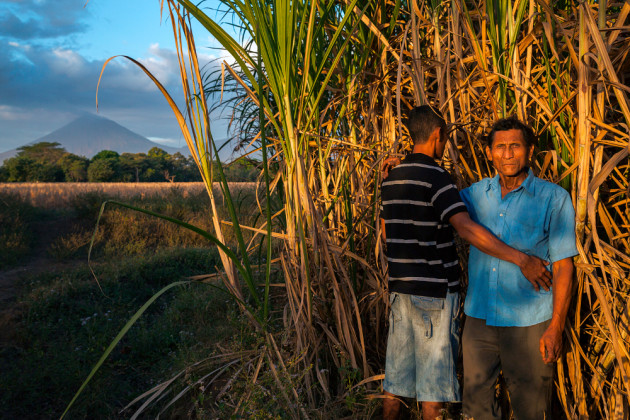
For Kashi, the dedication to personal projects is akin to being in a committed relationship. “It really is the same thing. If I tell you I am going to commit to you, it means that if another women walks around the corner, it doesn’t matter. I am committed to you,” he says. “And, as with any commitment, it brings richness and depth and it allows you to build something that will last. That was really what allowed me to grow as a human being as well as a photographer, and learn what it meant to commit to my subjects and commit to my projects.”
With so many worthy stories to choose from, however, it can be hard to determine what to dedicate oneself to, so Kashi relies on a hallowed trifecta of fundamental needs that must be satisfied before he gives his heart away. The first criterion is a genuine interest, that can be sparked by the smallest detail, but once ignited, is all-consuming. “When I was in Northern Ireland, I read that the Kurds were the largest stateless population in the world. I was hooked! I spent the next year in libraries doing research, this is before the Internet, and I become so absorbed in the history, culture and geopolitical implications of the Kurdish cause.” Kashi’s captivation paid off, and his photo essay on disenfranchised Kurds would be his first project with National Geographic, and then later published as the monograph, When the Borders Bleed: The Struggle of the Kurds.
Kashi’s second touchstone is whether the project is actually possible. This is perhaps the most dynamic criterion, and has evolved with time and the ever-changing circumstances that revolve around doing reportage in dangerous places. “In a way, it’s actually become harder to choose,” Kashi admits. “Partly because I have a family, partly because the security situation in the world has changed, and also because funding has become so much more difficult. There’s lots of stories I see everyday in the New York Times, but then I know I can’t do that, because it’s too dangerous there now, or I can’t do it because the amount of time it would take to do it, I can’t give.”
The final test is the project’s journalistic value, and whether Kashi feels a difference can be made. Again, he admits this canon is not as clear-cut as it once was. “When I began my career, up until maybe the last five years, there was a sense of idealism that this work could really make a difference, and I ended up working in really touchy places,” he says. “With what’s going on now, they don’t even need us anymore. ISIS and Al-Qaeda don’t need their story to be told - they can now tell it for themselves. Moreover, we’re viewed as pawns in that game that are of value either to be killed or taken hostage.”
Commitment at a cost
According to Kashi, the calculus of his work has irrevocably changed, and it has become a lot more challenging to do the work that he does; an irony, he states, as it has occurred at a time when he’s never had more power or influence. Kashi now finds it a lot harder to go away for long periods of time. “I know this is ridiculous, and my wife should shoot me, but when my kids were really young, that’s when I’d go away for two or three months,” he laughs. “Now that they’re independent and free, I try not to go away for more than 4-6 weeks at a time. But the teenage years, in some way, are trickier!”
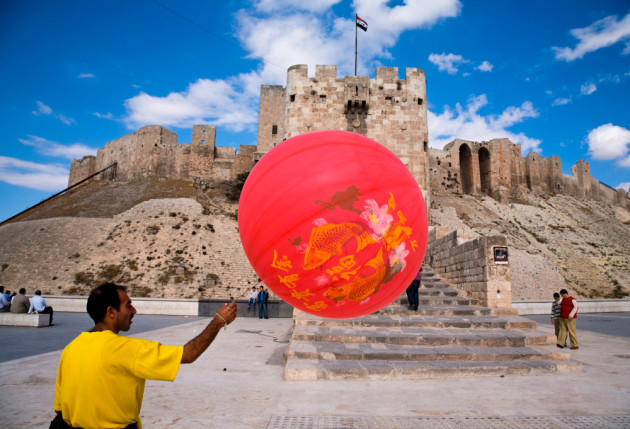
While Kashi states that the transition from working in the field to his life at home has become easier, he is now becoming aware of the accumulative impact of a lifetime of reporting from war zones. “I can come back from South Sudan and within minutes I am cleaning the litter box and putting the dishes away, or helping my daughter with her homework,” he says. “But it’s much harder to socialise. I haven’t taken a vacation in so many years because it’s so hard to let go. I find myself more judgemental or resentful - not of people specifically, but of situations. When I am in a situation where everyone is really well-heeled and having fun, I struggle with that - that I am not able to go there as easily.”
Though he is still playful with loved ones, light-hearted with friends and colleagues, and is still very much in full possession of his wry and witty humour, the spectre of projects past is now a constant companion. “It’s no badge of honour,” says Kashi simply. “It kind of sucks.”
Seventh heaven
Fortunately, Kashi has an extensive support network of photojournalistic kith and kin, in particular, his fellow brethren at the VII photo collective, of which he was recently elected president. Kashi joined the agency in 2010, after almost 30 years of working solo. “I decided to join because, as much as I could achieve on my own, I felt that to be a part of something bigger was not only exciting, but had huge potential, especially at this point in my life and my career”. VII membership would live up to Kashi’s expectations, and then exceed them.
There are, of course, the obvious and tangible commercial benefits of being associated with the agency, such as the large-scale assignments that would otherwise have passed him by. “I am now working with a professor at Rutgers University - Newark on a three-year project that will create a documentary series on immigration. This would never have happened if it was with ‘Ed Kashi’. But it was with ‘VII’,” Kashi explains.
Then there is the administrative support that his membership offers in terms of keeping up with the ever-changing business model of being a photographer. “There’s marketing and self-promotion, and it’s relentless,” says Kashi. “I am committed and I get it, but it’s exhausting and frustrating at times.”
But, most precious of the opportunities and advantages offered by VII is the access it has opened to the minds and talent of his distinguished VII colleagues, and the possibility of collaboration. “I felt that if I could be with a group of photographers and storytellers of this calibre, together we could achieve really awesome things,” says Kashi. “The ability to leverage the value, meaning and the potential of VII beyond the little cave of photojournalism, and into a broader context, is the most interesting part.”
The pedagogue
Just don’t tell tales out of school Kashi begs. “To be with just random photojournalists talking about work? Shoot me. Just kill me. I can’t cope,” Kashi laments. “I don’t want to hear what project you’re working on and I don’t want you to ask me what I am doing next. What I want to do is go to my son’s baseball game. I want to go to my daughter’s soccer game. I want to talk to you about what’s going on in Tunisia. But I don’t want to talk shop,” he finishes earnestly. According to Kashi, there is a time and place for examining and breaking down his photographic practice, and that is in his role as an educator. “Those are the forums where I am going to open that piece of myself up, but it’s in a structured and constructive context.”
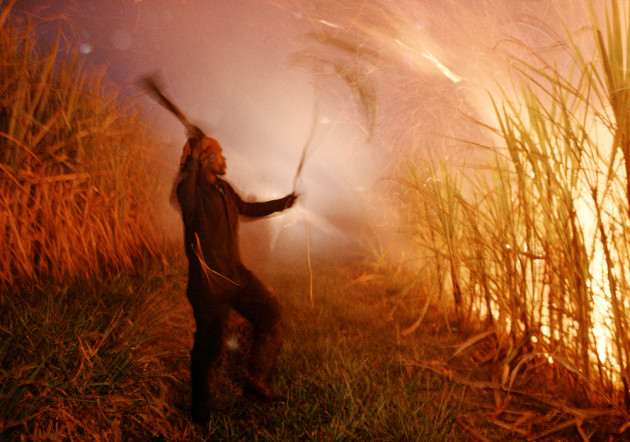
Though he never envisaged that education would be part of his future career, it was very early on in his career, when Kashi was in his late twenties, that he started to get invited to speak at classes. While he admits that, at first, he participated partly out of interest, and partly to enjoy the boost to his ego, decades later, education has become a daily part of Kashi’s practice. He not only frequently lectures and hosts workshops, but he is also part of the VII mentor programme, and is currently acting as sensei to Iraqi photojournalist Ali Arkady, which is a two-year, unpaid, 24/7 commitment.
After his own experiences, nurturing the dreams of a new generation is a responsibility he must treat with utmost seriousness. “In some ways, I never feel more alive with my work than when I share it in these kinds of intimate settings or in lectures,” he says. “I am with people, it’s real, I hear them cry and laugh. It’s so alive.”
His own damning professor of yore should be terminally chagrined to find the young Ed Kashi has grown to surpass him, for he has become not just the storyteller he wished to be, but internationally revered as a poet of light, after all.
